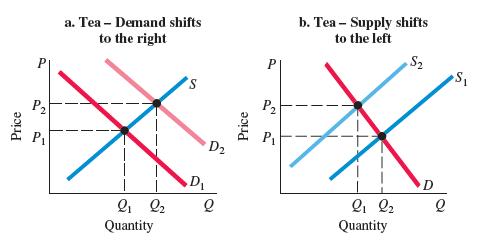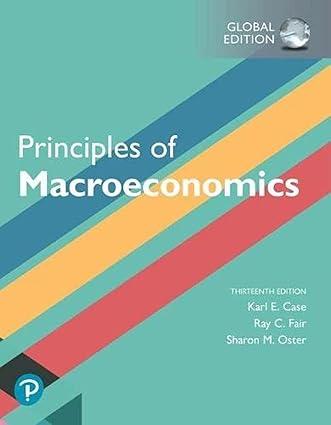Tea is a popular beverage in many parts of the world, especially during rainy seasons. This is
Question:
Tea is a popular beverage in many parts of the world, especially during rainy seasons. This is because tea, having curative properties like flavonoids and polyphenols for typical ailments like headaches, sore throat, fevers and colds, is associated with a “healthy” brand value.
Changes in factors like awareness, income, and prices of other goods causes demand to change. Variations in cost of production, climatic conditions, technologies, or prices of related goods causes supply to change. As a result, any changes in demand or supply may cause a change in equilibrium price. As such, an increase in demand or a fall in supply can increase the equilibrium price. So how does an increase in demand cause an increase in the equilibrium price? The demand for tea increases through an increased awareness of its positive attributes, resulting in a rightward shift of the demand curve. At the initial equilibrium price, quantity demanded exceeds quantity supplied; hence, the price tends to rise. With rising prices, quantity demanded falls while quantity supplied increases, until a new equilibrium is reached, where quantity demanded equals quantity supplied (Figure a). A decrease in supply causes the equilibrium price to increase. Based on reports, supply may decrease due to adverse weather conditions, a decline in tea leaf production, increased costs of field and factory inputs, and other factors. These determinants shift the supply curve to the left. At the initial equilibrium price, quantity demanded is higher than quantity supplied and price rises (Figure b). While tea has become a common health drink, only the countries with suitable climatic conditions can grow tea leaves. Therefore, it is most likely that the fall in supply outweighs the increase in demand. This leads to an increase in equilibrium price but a decrease in equilibrium quantity.

Question
When demand and supply curves shift simultaneously, what are the factors that would determine the direction of the change in equilibrium price and quantity?
Step by Step Answer:

Principles Of Macroeconomics
ISBN: 9781292303826
13th Global Edition
Authors: Karl E. Case,Ray C. Fair , Sharon E. Oster





